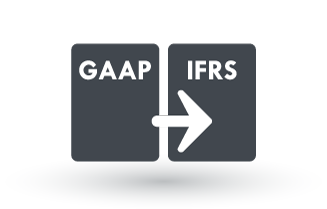
Grant Reward Cards
Direct Electronic Funds Transfer for Merchant Expenses
About the Grant Reward Card
A Grant Reward Card is a type of program branded open looped pre-paid card for community investment funds that are granted directly on the card, rather than providing access to network card processors. These cards are printed and pre-loaded with a third party card provider. They are loaded with digital asset currency value and can be used for one time or partial transfer until the balance is exhausted.
Types of Grant Reward Card
The card function as three of reward card as: corporate, payroll, or benefit card. They perform as a pre-paid card that pre-loaded with funds.
Corporate: These are issued by grantors and pre-loaded with a specific amount of funds to be spent at the corresponding member merchants or administrators.
Payroll: These are cards that Treasury Bank provide employees with to pay their wages or salary by loading the amount onto the card.
Benefit: Treasury Bank use these to distribute benefits such as program spending, officers compensation, and other support funds directly to residential beneficiaries.
How does a Grant Reward Card work?
A Grant Reward Card hold a specific amount of non cash, cash credit, or cash directly on the card from Treasury Bank, typically in a chip or magnetic stripe for direct Bank to Bank B2B Alternative Payment Routing APR. This distinguishes it from network debit or credit cards, which draw funds from a card networks such VISA or Master Card etc.
Here’s how it works.
Issuing Cards: Treasury Bank Issues the Grant Reward Card for it Community Investment Programs have similar method and protections as debit cards. The difference is the Grant Reward Card is accepted only by Treasury Bank Members as Community Investment Program Merchants. When cards are scanned funds are transferred only with the merchant member’s acquiring bank as payment processor.
Loading Funds: The card is initially loaded with a predetermined amount of equity, debt or money value by Treasury Bank as issuer. This value is stored within the card’s magnetic stip or EMV chip by third party store value card technology.
Making Transfer: When an members uses the card to make credit transfers via Treasury Bank to members acquiring bank The aquring bank debt the card’s data and verifies the stored value. If sufficient, the transaction amount is deducted from the card’s balance held directly on the card magnetic strip. No external account or network authorization is needed, which can be used only as a credit transfer at specific Acquirer for merchant account. Open-loop cards (such as Visa or Mastercard gift cards) function similarly to debit cards as they require network authorization for transactions.
Checking the balance: You can usually check the remaining balance on the card by visiting Treasury Bank’s third party app.
Reloading funds: cards are reload with additional funds in reference to a Grant Reward Card to increase the available balance for future use. This is done through treasury bank core and it third party online methods.
Security: If the card is lost or stolen, you can usually report the card to Treasury Bank, which might then block the card and Treasury Bank a replacement with the remaining balance transferred.
Acquirer
An acquirer (also known simply as an acquiring bank) or financial institution that processes credit or debit card payments on behalf of a treasury banks merchant members. The acquirer allows merchants to accept credit card payments from Treasury Bank as private card issuers outside of major consumer card networks such as Visa, MasterCard, Discover, China UnionPay, American Express.
The acquiring bank enters into a contract with a treasury bank and merchant members by opening a settlement accounts. After account opening acquirer offers it a merchant account. This arrangement provides the merchant with internal or external card processing. Under the agreement, the acquiring bank exchanges funds with Treasury Bank as issuing banks on behalf of the merchant and pays the merchant for its payment-card activity’s net balance — that is, gross sales minus reversals, interchange fees, and acquirer fees. Acquirer fees are an additional markup added to association interchange fees by the acquiring bank, and those fees vary at the acquirer’s discretion.
Risks Management
The acquiring bank accepts the risk that the treasury bank and merchant will remain solvent. This will void any risk of fund reversals.
All Transfer are closed loop from detailed internal partners agreement:
- No card refund is the return of funds to the consumer, voluntarily initiated by the merchant.
- No card reversal is where the merchant cancels a transaction after it has been authorized but before settlement occurs.
- No card charge-back will occurs in a dispute between the merchant and Treasury Bank over the validity of the transaction. The cardholder may request the return of funds through the issuing bank for various reasons, including that the goods were not received or were faulty, or that the cardholder lacks knowledge of the transaction.
- New merchants pose no risk to acquiring banks as well, beyond solvency concerns.
- No fraudulent because new merchant account Treasury Bank clears orders, before and after receiving payment to void disappear without delivering the promised goods or service.
- Treasury Banks merchant procurement mandate members being PCI DSS compliant. If merchants are not PCI DSS compliant, the merchants themselves may be responsible for losses due to fraud, which may result in fines from the card schemes
Virtual Transfer Terminal
Virtual Transfer Terminals VTT operate using treasury bank portal app, giving members the ability to make credit transfers online without using an acquirer services terminal. VTT is another convient way for members to processing grant reward transactions.
VTT can impliment funds transfer from member accounts at Treasury Bank through an internet-equipped device like a laptop, tablet, or smartphone. Most virtual terminals accept third party credit and debit cards processor, as well as ACH payments. Unlike in-person transactions made with a card reader, VTT require the members to manually input the transaction and account information.
How Deposit Terminals Work:
- Member insert their card data or use a the Tresury bank or the aqquirer banking app to initiate the transfer.
- Cash can be deposited directly into a slot or by using a app to make deposits.
- Treasury Bank pre-validates the fund transfer to the member’s card and account at the Acquirer.
Benefits of Using Deposit Terminals:
- Convenience: Members can transfer funds anytime, anywhere, as long as they have access to a phone or computer.
- Efficiency: Transfering funds via a VTT is faster and more efficient than visiting a bank branch or using a teller.
- Cost Savings: Both Treasury Bank and Banking partners can reduce operating costs by offering convenient Electronic Funds Transfer services.
Benefits of receiving Grant Reward Cards as a member
Here are some of the benefits that Grant Reward Cards offer merchant members
Competitive advantage: A Grant Reward Card program can differentiate a business from competitors; it can attract customers seeking alternative payment options and a high level of convenience.
Expense management: Community Investment Programs can preset spending limits and restrictions on specific business categories. This ensures compliance with company policies and prevents unauthorized spending. Businesses can monitor transactions made with Grant Reward Card in real time, providing immediate visibility into employee spending and enabling prompt identification of any discrepancies or potential fraud. Grant Reward Card can also mitigate administrative costs and free up valuable time for finance teams by reducing manual expense reports and reimbursement processes.
Cash flow: Members receive funds on stored value cards immediately upon card activation or reloading, which boosts cash flow and provides financial stability—especially for smaller businesses. With prepaid balances, businesses can also better forecast revenue streams and make more informed financial decisions based on anticipated spending patterns.
Fraud risk: Grant Reward Card typically use advanced security features such as encryption and tokenization to safeguard sensitive cardholder data and mitigate the risk of data breaches. In the event of loss or theft, businesses can typically limit their liability to the remaining balance on the card.
Brand awareness: Branded Grant Reward Card serve as an ongoing reminder of the business every time a customer uses one. This increases brand exposure and recall among customers and potential customers. Businesses can also create positive associations with their brand by providing a convenient and secure payment option.
Challenges for users
Fees: Treasury Bank Grant Reward Card come with fees including activation fees, monthly maintenance fees, reload fees, and inactivity fees. This can erode the value of the card.
Limited use: The Grant Reward Card are only usable at specific acquiring bank processor.
Privacy Cards: These are virtual cards that mask your actual payment information, keeping it private from merchants and third parties. They have additional security features to protect against fraud.
Private Label Credit Cards: These are branded credit cards that can only be used with a specific retailer or brand. They do not carry a credit card network logo and are generally not accepted by other merchants outside of Treasury Bank’s network.
Security risks: If a Payment Card is lost or stolen, and it is not adequately protected by PINs or other security measures, anyone with access to the card can use it to make transfer.
Challenges for Treasury Bank as issuers
Regulatory compliance: As an Issuers Treasury Bank must navigate complex regulatory environments including Anti-Money Laundering (AML) laws and regulations concerning unclaimed property.
Fraud risks: Voucher Card are susceptible to different types of fraud including cloning and unauthorized loading. This can lead to financial losses and damage to the issuer’s reputation.
Technical issues: Treasury Bank must implement and maintain the technological infrastructure required to support issuing, reloading, and processing stored value on the Voucher Card.
Redemption liability: Treasury Bank manages the accounting and financial implications of unspent funds on cards, known as breakage. This can affect financial reporting and revenue recognition.




